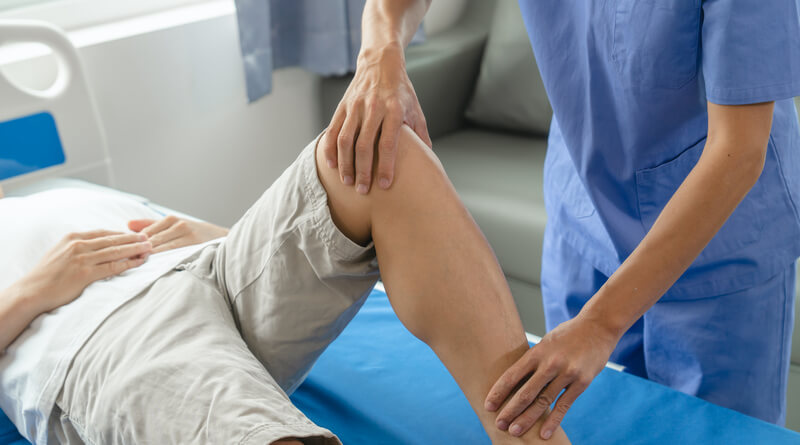In the ever-evolving healthcare landscape, traditional health insurance models have been prevalent for decades, focusing primarily on providers and payers. However, these models often overlook an essential stakeholder in the healthcare ecosystem – the patient. With the increasing need for individualized healthcare, a more patient-centric approach to health insurance is garnering attention.

Understanding Patient-Centric Health Insurance
Patient-centric health insurance prioritizes the needs, preferences, and convenience of patients over other considerations. It goes beyond merely providing medical coverage to encompass wellness initiatives, personalized care plans, digital access to healthcare services, and a strong emphasis on patient empowerment.
Traditional health insurance typically centers on a ‘one-size-fits-all’ approach. The system often disregards the uniqueness of individual patient experiences and needs. Conversely, patient-centric health insurance acknowledges that healthcare is not a uniform service and aims to tailor insurance packages to the patient’s unique healthcare journey.
By being patient-centric, the needs of the customers are in the limelight. For instance, this is possible through online health insurance quotes. This way, people can shop and compare policies anytime and anywhere, improving accessibility.
Adopting a patient-centric model brings several benefits. These include improved patient satisfaction due to more personalized care, potentially better health outcomes as patients feel more engaged in their healthcare decisions, and more efficient resource allocation due to a deeper understanding of patient needs.
The Importance of Access to Patient-Centric Health Insurance
In a patient-centric model, access is a fundamental pillar. This approach broadens the definition of access beyond just the financial capability to afford healthcare.
Access here implies a comprehensive, integrated system that prioritizes patient convenience and care. It recognizes the fact that for effective healthcare delivery, patients should not only have affordable coverage but also convenient access to healthcare providers, medications, healthcare facilities, and critical digital healthcare resources.
For instance, patient-centric health insurance may include coverage for a broad network of physicians, specialists, and hospitals, minimizing the distance patients have to travel for care.
It might also cover a wide range of medications, ensuring patients can access necessary treatments without financial strain.
Furthermore, with the increasing digitization of healthcare, such an approach may include benefits like online consultation services, digital health records, or even AI-driven personal health recommendations, all aimed at fostering a more holistic and patient-friendly approach to healthcare.
Personalization in Patient-Centric Health Insurance
In patient-centric insurance, personalization acts as a powerful tool to meet and exceed patient expectations. It breaks away from the ‘one-size-fits-all’ paradigm that traditionally governs health insurance. Instead, it adopts a bespoke approach that tailors insurance packages to the unique needs of individual patients.
This level of personalization can manifest in various ways. For instance, it may involve offering coverage for specific medications that a patient regularly requires or creating tailored network offerings that include specialists relevant to a patient’s particular health condition.
Further, it could mean providing coverage for alternative therapies if a patient prefers non-conventional treatment methods.
In an age where preventative healthcare is being promoted, patient-centric insurance can also offer personalized wellness programs. These programs may include lifestyle coaching, personalized diet, and exercise plans, mental health support, or chronic disease management programs.
Some insurers also offer rewards or discounts for engaging in healthy behaviors, creating a powerful incentive for patients to proactively manage their health.
Personalization can even extend to the digital realm, with some insurers offering digital tools that allow patients to manage their coverage, book appointments, or even consult with healthcare professionals online. These features can provide significant convenience and enhance patient engagement with their health.
The Role of Policy and Regulatory Changes
A discussion of patient-centric health insurance would be incomplete without recognizing the influence of health policies and regulatory changes. These governmental decisions can significantly impact the direction of health insurance, facilitating greater patient centricity.
Governmental Support for Patient-Centric Initiatives
Government bodies can support patient-centric initiatives by providing incentives for health insurance providers that prioritize access and personalization. These incentives could take the form of tax breaks, grants, or subsidies.
Regulations Promoting Transparency and Interoperability
Regulatory changes that promote transparency and interoperability in the healthcare sector can also contribute to enhanced patient-centric care.
Transparency allows patients to make informed decisions about their health insurance. Meanwhile, interoperability ensures a seamless flow of patient data across different healthcare platforms, facilitating a more personalized approach to patient care.
How Technology Improves Access and Personalization
The intersection of healthcare and technology presents a myriad of opportunities to enhance the accessibility and personalization aspects of health insurance.
By leveraging technological advancements, insurers can break down traditional barriers. Consequently, they can also offer more personalized care and enhance accessibility.
Data and Analytics
One of the most significant technological assets at our disposal today is data. With the enormous amount of health data generated, there’s an unprecedented opportunity to use this information to enhance personalization and access to health insurance.
Data analytics can help insurers delve deep into this data, identifying trends and patterns that can predict individual health needs.
For instance, by analyzing a patient’s medical history, lifestyle choices, and even genetic information, insurers can predict potential health risks the patient may face in the future. This insight can guide the development of personalized insurance packages that cater specifically to these needs, ensuring each patient has access to the care they may require.
Furthermore, data analytics can aid in the detection of population health trends. For example, if an analysis reveals an increase in diabetes in a certain region, insurers can design plans with robust diabetes coverage, ensuring the population’s specific needs are met.
Telehealth and Digital Access
Telehealth, fueled by advances in digital technology, plays a pivotal role in improving access to health services.
It allows patients, particularly those in remote or underserved areas, to consult with healthcare professionals without the need to travel. They can receive professional medical advice, undergo virtual examinations, and even receive certain types of treatments from the comfort of their homes.
Telehealth not only increases healthcare access but also enhances convenience, reduces travel-related expenses and time, and minimizes potential delays in receiving care. This is especially critical for patients managing chronic conditions that require regular medical consultations.
Artificial Intelligence and Machine Learning
The integration of artificial intelligence (AI) and machine learning technologies in healthcare is a game-changer. These technologies can enhance the capabilities of predictive analytics, enabling insurers to provide more effective and personalized insurance packages.
AI and machine learning can help analyze vast datasets, identify complex patterns and predict future health issues based on current data. This predictive capability is invaluable in developing preventive healthcare strategies and designing personalized insurance plans.
For instance, an AI model could predict an individual’s risk for heart disease based on factors like age, family history, lifestyle habits, and biometric data. Insurers can use this information to offer a personalized insurance plan that includes coverage for heart disease management and prevention.
Additionally, AI can also power digital tools that provide personalized health advice, reminders for medication, appointment scheduling, and even real-time online health insurance quotes, further enhancing accessibility and personalization.
Conclusion
Patient-centric health insurance is a promising approach that seeks to revolutionize the healthcare landscape by prioritizing the patient’s needs, enhancing access to services, and promoting personalized care.
As technology and patient empowerment continue to advance, we can anticipate a future where healthcare is more individualized, accessible, and effective, ultimately leading to improved patient satisfaction and health outcomes.
The patient-centric model of health insurance is not just a trend; it’s a necessary evolution that echoes the call for personalization in modern healthcare.






















